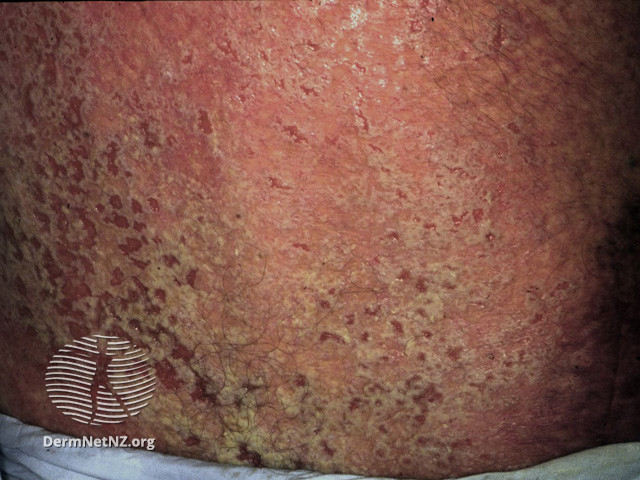|
ATP2A2
ATP2A2 also known as sarcoplasmic/endoplasmic reticulum calcium ATPase 2 (SERCA2) is an ATPase associated with Darier's disease and Acrokeratosis verruciformis. This gene encodes one of the SERCA SERCA, or sarco/endoplasmic reticulum Ca2+-ATPase, or SR Ca2+-ATPase, is a calcium ATPase-type P-ATPase. Its major function is to transport calcium from the cytosol into the sarcoplasmic reticulum. Function SERCA is a P-type ATPase. It resides ... Ca(2+)-ATPases, which are intracellular pumps located in the sarcoplasmic or endoplasmic reticula of muscle cells. This enzyme catalyzes the hydrolysis of ATP coupled with the translocation of calcium from the cytosol to the sarcoplasmic reticulum lumen, and is involved in calcium sequestration associated with muscular excitation and contraction. Alternative splicing results in multiple transcript variants encoding different isoforms. References External links * {{ATPases ... [...More Info...] [...Related Items...] OR: [Wikipedia] [Google] [Baidu] |
Darier's Disease
Darier's disease (DAR) is an inherited skin disorder that presents with multiple greasy, crusting, thick brown bumps that merge into patches. It is an autosomal dominant disorder discovered by French dermatologist Ferdinand-Jean Darier. Darier's is characterized by dark crusty patches on the skin that are mildly greasy and that emit a strong odor. These patches, also known as keratotic papules, keratosis follicularis, or dyskeratosis follicularis, most often appear on the scalp, forehead, upper arms, chest, back, knees, elbows, and behind the ear. Mild forms of the disease are the most common, consisting solely of skin rashes that flare up under certain conditions such as high humidity, high stress, or tight-fitting clothes. Short stature, when combined with poorly-formed fingernails that contain vertical striations, is diagnostic even for mild forms of DAR. Symptoms will usually appear in late childhood or early adulthood between the ages of 15 to 30 years and will vary over th ... [...More Info...] [...Related Items...] OR: [Wikipedia] [Google] [Baidu] |
Acrokeratosis Verruciformis
Acrokeratosis verruciformis is a rare autosomal dominant disorder appearing at birth or in early childhood, characterized by skin lesions that are small, verrucous, flat papules resembling warts along with palmoplantar punctate keratoses and pits. However sporadic forms, whose less than 10 cases have been reported, presents at a later age, usually after the first decade and generally lack palmoplantar keratoses. Whether acrokeratosis verruciformis and Darier disease are related or distinct entities has been controversial, like Darier's disease, it is associated with defects in the ATP2A2 gene. however the specific mutations found in the ATP2A2 gene in acrokeratosis verruciformis have never been found in Darier's disease. See also * List of cutaneous conditions * List of genes mutated in cutaneous conditions A number of gene mutations have been linked to conditions of or affecting the human integumentary system. See also * List of radiographic findings associated with cu ... [...More Info...] [...Related Items...] OR: [Wikipedia] [Google] [Baidu] |
ATPase
ATPases (, Adenosine 5'-TriPhosphatase, adenylpyrophosphatase, ATP monophosphatase, triphosphatase, SV40 T-antigen, ATP hydrolase, complex V (mitochondrial electron transport), (Ca2+ + Mg2+)-ATPase, HCO3−-ATPase, adenosine triphosphatase) are a class of enzymes that catalyze the decomposition of ATP into ADP and a free phosphate ion or the inverse reaction. This dephosphorylation reaction releases energy, which the enzyme (in most cases) harnesses to drive other chemical reactions that would not otherwise occur. This process is widely used in all known forms of life. Some such enzymes are integral membrane proteins (anchored within biological membranes), and move solutes across the membrane, typically against their concentration gradient. These are called transmembrane ATPases. Functions Transmembrane ATPases import metabolites necessary for cell metabolism and export toxins, wastes, and solutes that can hinder cellular processes. An important example is the sodium-po ... [...More Info...] [...Related Items...] OR: [Wikipedia] [Google] [Baidu] |
SERCA
SERCA, or sarco/endoplasmic reticulum Ca2+-ATPase, or SR Ca2+-ATPase, is a calcium ATPase-type P-ATPase. Its major function is to transport calcium from the cytosol into the sarcoplasmic reticulum. Function SERCA is a P-type ATPase. It resides in the sarcoplasmic reticulum (SR) within myocytes. It is a Ca2+ ATPase that transfers Ca2+ from the cytosol of the cell to the lumen of the SR. This uses energy from ATP hydrolysis during muscle relaxation. There are 3 major domains on the cytoplasmic face of SERCA: the phosphorylation and nucleotide-binding domains, which form the catalytic site, and the actuator domain, which is involved in the transmission of major conformational changes. In addition to its calcium-transporting functions, SERCA1 generates heat in brown adipose tissue and in skeletal muscles. Along with the heat it naturally produces due to its inefficiency in pumping ions, when it binds to a regulator called sarcolipin it stops pumping and functions solely as ... [...More Info...] [...Related Items...] OR: [Wikipedia] [Google] [Baidu] |
